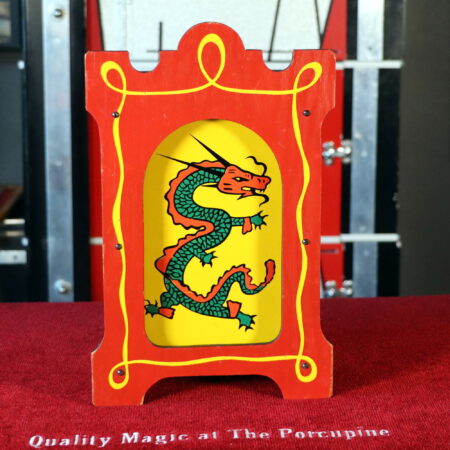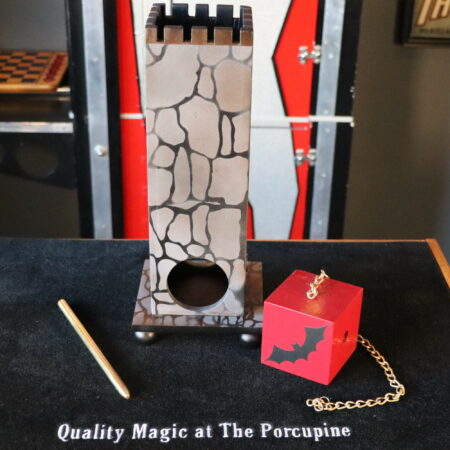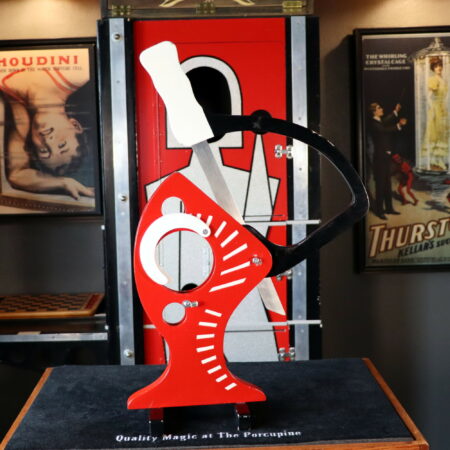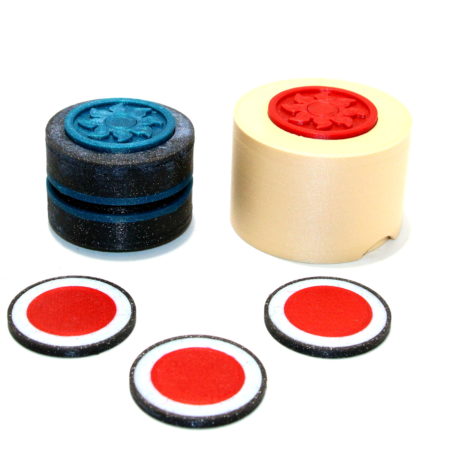
This beautiful and practical utility device was first manufactured by Thayer c. 1936 as the “Wu-Ling” Pagoda Mystery and was originated by Englishman Wu-Ling (aka Mr. Richard C. Ritson, MMC, The Magical Mandarin). In the Thayer literature it is also often referred to as the Pagoda Cabby. Owen’s carried on with their version and dropped the “Wu-Ling” from the title.
This one from Owen’s is very much Carl Owen’s style and looks beautiful. For the most part the operation is very smooth and slides easily. It is possible to put the sliding door back into the wrong track for the slider and this can cause the door to stick, but keep your wits about you and you’ll have a beautiful utility item whenever you need to vanish or appear or even exchange a large number of items 🙂
The routine in the video allowed me to vanish items twice instead of the normal single vanish or appearance you are used to. By choosing a matching silk I could go back in and vanish two silks after I vanished the silk and the bottle to begin with. I thought this really maximized the use of the apparatus. If you want to see an appearance instead of a vanish you can look at the video for this effect.
Click here for more information.









